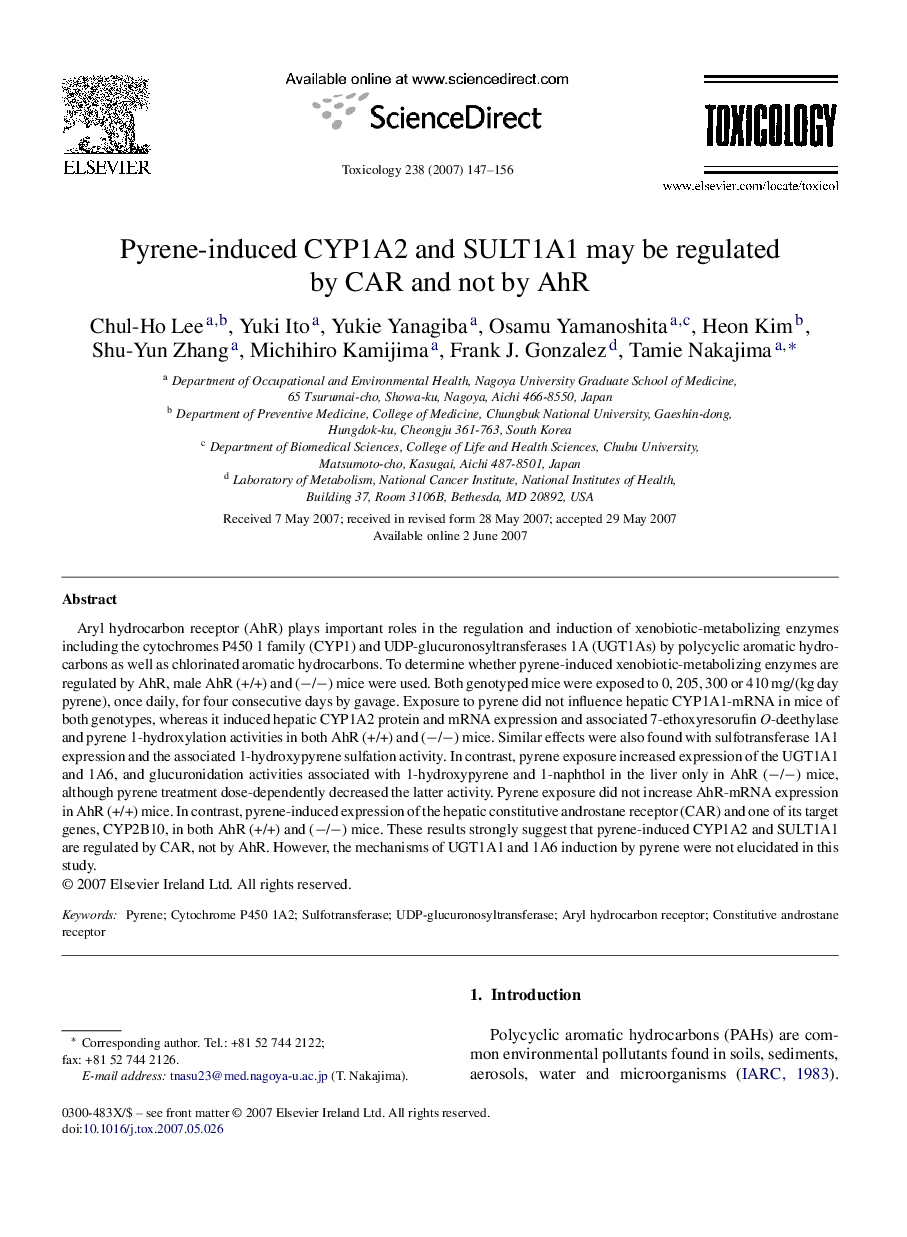| Article ID | Journal | Published Year | Pages | File Type |
|---|---|---|---|---|
| 2597390 | Toxicology | 2007 | 10 Pages |
Aryl hydrocarbon receptor (AhR) plays important roles in the regulation and induction of xenobiotic-metabolizing enzymes including the cytochromes P450 1 family (CYP1) and UDP-glucuronosyltransferases 1A (UGT1As) by polycyclic aromatic hydrocarbons as well as chlorinated aromatic hydrocarbons. To determine whether pyrene-induced xenobiotic-metabolizing enzymes are regulated by AhR, male AhR (+/+) and (−/−) mice were used. Both genotyped mice were exposed to 0, 205, 300 or 410 mg/(kg day pyrene), once daily, for four consecutive days by gavage. Exposure to pyrene did not influence hepatic CYP1A1-mRNA in mice of both genotypes, whereas it induced hepatic CYP1A2 protein and mRNA expression and associated 7-ethoxyresorufin O-deethylase and pyrene 1-hydroxylation activities in both AhR (+/+) and (−/−) mice. Similar effects were also found with sulfotransferase 1A1 expression and the associated 1-hydroxypyrene sulfation activity. In contrast, pyrene exposure increased expression of the UGT1A1 and 1A6, and glucuronidation activities associated with 1-hydroxypyrene and 1-naphthol in the liver only in AhR (−/−) mice, although pyrene treatment dose-dependently decreased the latter activity. Pyrene exposure did not increase AhR-mRNA expression in AhR (+/+) mice. In contrast, pyrene-induced expression of the hepatic constitutive androstane receptor (CAR) and one of its target genes, CYP2B10, in both AhR (+/+) and (−/−) mice. These results strongly suggest that pyrene-induced CYP1A2 and SULT1A1 are regulated by CAR, not by AhR. However, the mechanisms of UGT1A1 and 1A6 induction by pyrene were not elucidated in this study.
